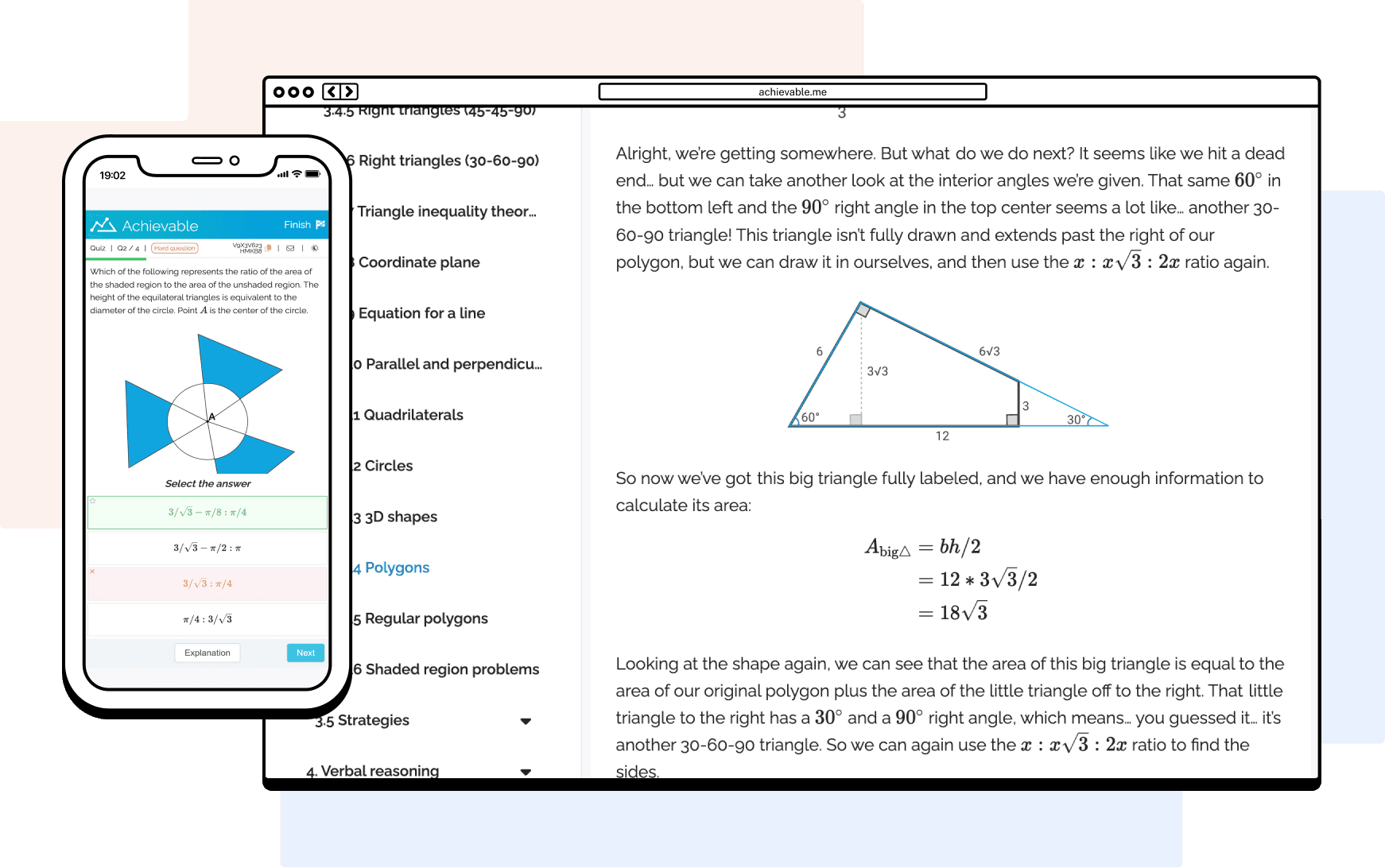
GRE FAQs
Answers to the most common questions about the GRE.

GRE or GMAT: Which should I take?
Many think of the GMAT as a business-focused exam and the GRE as more general, but that is actually an outdated notion - all top 25 business schools now accept the GRE. When choosing between the GRE vs. GMAT, you should now consider the other features of the test and testing pool to give yourself the best chance of success. Here are three reasons why the GRE is a better option:
1
The GRE only requires math, not logical reasoning
One of the hardest parts of the GMAT quantitative sections is logical reasoning, in which you have to answer questions that combine logic questions with math. The GRE has no such questions, and this makes the test itself easier and also gives you one less thing to have to study as you prepare for the exam.
2
The GRE can be used for any program
Not sure whether you want to be an MBA or a specialized master's degree in your field of work? With the GRE, you only need to prepare for one exam and your results will be applicable to any program.
3
The GRE has a less punishing adaptive format
Both the GRE and GMAT are "adaptive tests", which means they get more or less difficult depending on how you do on previous questions. The GMAT adapts every question, which means it can ramp up in difficulty very quickly if you get a lot of questions right. The subsequent questions can be very difficult and it takes a lot of time and energy to prepare for them on the chance you get to see them. On the other hand, the GRE only adapts after each section, so the question difficulty varies a lot less. This makes it easier for you to prepare for and you'll more consistently prepare for the questions you'll actually see on the exam.
4
It is easier to get into a top business school with the GRE
Below, we list some of the top business schools in the world and their GMAT and GRE percentile scores. As you can see, most of these programs have a considerable gap in percentiles, meaning that you only need to be in the top 15% of applicant GRE scores to have a median chance of getting into UPenn Wharton, vs. a top 4% score for the GMAT.
University
Percentiles
University of Pennsylvania, Wharton
96th GMAT; 85th GRE
Stanford University, GSB
96th GMAT; 91st GRE
Harvard University, HBS
96th GMAT; 88th GRE
Massachusetts Institute of Technology, Sloan
96th GMAT; 88th GRE
University of Chicago, Booth
96th GMAT; 88th GRE
Columbia University, CBS
96th GMAT; 85th GRE
Northwestern University, Kellogg
96th GMAT; 85th GRE
University of California - Berkeley, Haas
96th GMAT; 84th GRE
Yale University, SOM
94th GMAT; 91st GRE
Duke University, Fuqua
89th GMAT; 78th GRE
University of Michigan - Ann Arbor, Ross
94th GMAT; 85th GRE
Darthmouth University, Tuck
94th GMAT; 85th GRE
New York University, Stern
94th GMAT; 85th GRE
University of Virginia, Darden
92nd GMAT; 81st GRE
Cornell University, Johnson
89th GMAT; 80th GRE

What's a good GRE score?
Getting a top score on the GRE can dramatically improve your chances of being accepted by top universities. The following table shows the percentile cutoffs for GRE scores based on data from the makers of the GRE, ETS.org:
| Percentile | Quantitative | Verbal | Writing |
|---|---|---|---|
| 99th | 170 | 169 | 6.0 |
| 90th | 167 | 162 | 5.0 |
| 80th | 162 | 158 | 4.5 |
| 70th | 159 | 155 | |
| 60th | 156 | 153 | 4.0 |
| 50th | 153 | 151 |

How long is the GRE?
The GRE takes about two hours to complete. There are five sections: two quantitative, two verbal, and one essay. You always take the essay section first, but the remaining sections might be in any order.

Hit your target score
Achievable is the best online GRE exam prep course: effective, personalized, and convenient. With Achievable, you'll spend less time studying and hit your target score with confidence.